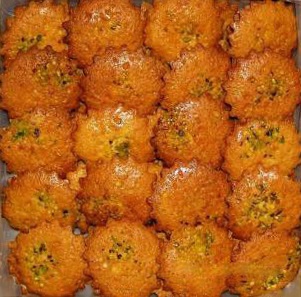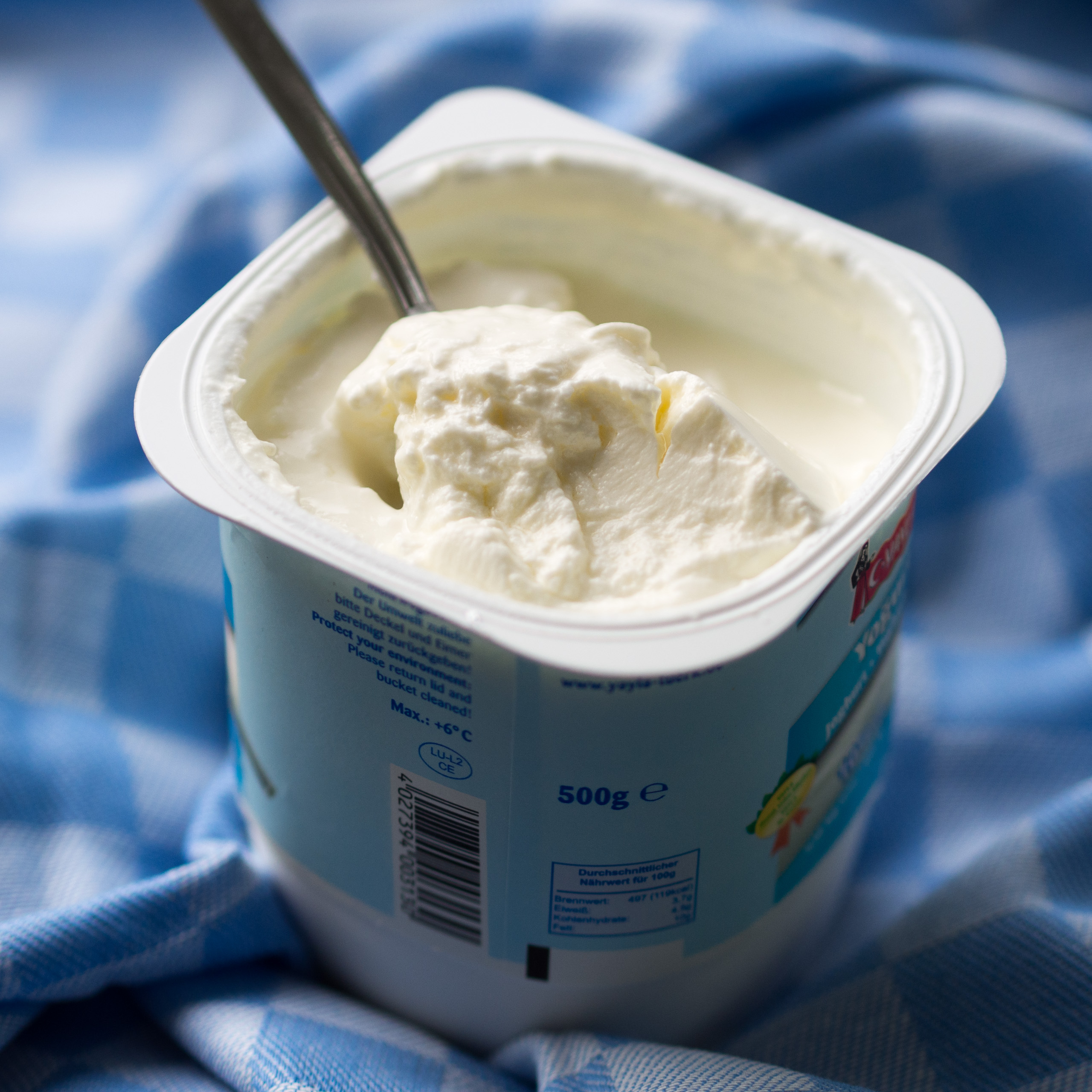|
Yazdi Cake
Yazdi cake is a cake native to Yazd in central Iran and is mostly used in Yazd Province itself for different ceremonies. Its main ingredients are egg, sugar, solid oil or butter, white flour, sodium citrate, sodium bicarbonate, baking powder, yogurt, milk, cardamom and if needed raisins and sliced up pistachio The pistachio (, ; ''Pistacia vera'') is a small to medium-sized tree of the Anacardiaceae, cashew family, originating in Iran. The tree produces nut (fruit)#Culinary definition and uses, seeds that are widely consumed as food. In 2022, world .... References {{Iran-cuisine-stub Cakes Iranian pastries ... [...More Info...] [...Related Items...] OR: [Wikipedia] [Google] [Baidu] |
Cake
Cake is a flour confection usually made from flour, sugar, and other ingredients and is usually baked. In their oldest forms, cakes were modifications of bread, but cakes now cover a wide range of preparations that can be simple or elaborate and which share features with desserts such as pastries, meringues, custards, and pies. The most common ingredients include flour, sugar, eggs, fat (such as butter, oil, or margarine), a liquid, and a leavening agent, such as baking soda or baking powder. Common additional ingredients include dried, candied, or fresh fruit, nuts, cocoa, and extracts such as vanilla, with numerous substitutions for the primary ingredients. Cakes can also be filled with fruit preserves, nuts, or dessert sauces (like custard, jelly, cooked fruit, whipped cream, or syrups), iced with buttercream or other icings, and decorated with marzipan, piped borders, or candied fruit. Cake is often served as a celebratory dish on ceremonial occasi ... [...More Info...] [...Related Items...] OR: [Wikipedia] [Google] [Baidu] |
Yazd
Yazd (; ) is a city in the Central District of Yazd County, Yazd province, Iran, serving as capital of the province, the county, and the district. At the 2016 census, its population was 529,673. Since 2017, the historical city of Yazd is recognized as a World Heritage Site by UNESCO. Because of generations of adaptations to its desert surroundings, Yazd is known for its Persian architecture. It is nicknamed the "City of Windcatchers" ( ''Shahr-e Badgirha'') from its many examples. It is also very well known for its Zoroastrian fire temples, ab anbars (cisterns), qanats (underground channels), yakhchals (coolers), Persian handicrafts, handwoven cloth (''Persian termeh''), silk weaving, Persian cotton candy, and its time-honored confectioneries. Yazd is also known as City of Bicycles, because of its early adoption of cycling, and its boasting the highest number of bicycles per capita in Iran. It is reported that bicycle culture in Iran originated in Yazd as a result o ... [...More Info...] [...Related Items...] OR: [Wikipedia] [Google] [Baidu] |
Iran
Iran, officially the Islamic Republic of Iran (IRI) and also known as Persia, is a country in West Asia. It borders Iraq to the west, Turkey, Azerbaijan, and Armenia to the northwest, the Caspian Sea to the north, Turkmenistan to the northeast, Afghanistan to the east, Pakistan to the southeast, and the Gulf of Oman and the Persian Gulf to the south. With a Ethnicities in Iran, multi-ethnic population of over 92 million in an area of , Iran ranks 17th globally in both List of countries and dependencies by area, geographic size and List of countries and dependencies by population, population. It is the List of Asian countries by area, sixth-largest country entirely in Asia and one of the world's List of mountains in Iran, most mountainous countries. Officially an Islamic republic, Iran is divided into Regions of Iran, five regions with Provinces of Iran, 31 provinces. Tehran is the nation's Capital city, capital, List of cities in Iran by province, largest city and financial ... [...More Info...] [...Related Items...] OR: [Wikipedia] [Google] [Baidu] |
Sodium Citrate
Sodium citrate may refer to any of the sodium salts of citric acid (though most commonly the third): * Monosodium citrate * Disodium citrate * Trisodium citrate The three forms of salt are collectively known by the E number E331. Applications Food Sodium citrates are used as acidity regulators in food and drinks, and also as emulsifiers for oils. They enable cheeses to melt without becoming greasy and also reduce the acidity of food. They are generally considered safe and are designated GRAS by the FDA. Blood clotting inhibitor Sodium citrate is used to prevent donated blood from clotting in storage, and can also be used as an additive for apheresis to prevent clots forming in the tubes of the machine. By binding with calcium ions in the blood it prevents the process of coagulation. It is also used as an anticoagulant for laboratory testing, in that blood samples are collected into sodium citrate-containing tubes for tests such as the PT (INR), APTT, and fibrinogen levels ... [...More Info...] [...Related Items...] OR: [Wikipedia] [Google] [Baidu] |
Sodium Bicarbonate
Sodium bicarbonate ( IUPAC name: sodium hydrogencarbonate), commonly known as baking soda or bicarbonate of soda (or simply “bicarb” especially in the UK) is a chemical compound with the formula NaHCO3. It is a salt composed of a sodium cation ( Na+) and a bicarbonate anion (). Sodium bicarbonate is a white solid that is crystalline but often appears as a fine powder. It has a slightly salty, alkaline taste resembling that of washing soda ( sodium carbonate). The natural mineral form is nahcolite, although it is more commonly found as a component of the mineral trona. As it has long been known and widely used, the salt has many different names such as baking soda, bread soda, cooking soda, brewing soda and bicarbonate of soda and can often be found near baking powder in stores. The term ''baking soda'' is more common in the United States, while ''bicarbonate of soda'' is more common in Australia, the United Kingdom, and New Zealand. Abbreviated colloquial forms such as '' ... [...More Info...] [...Related Items...] OR: [Wikipedia] [Google] [Baidu] |
Baking Powder
Baking powder is a dry chemical leavening agent, a mixture of a carbonate or bicarbonate and a weak acid. The base and acid are prevented from reacting prematurely by the inclusion of a buffer such as cornstarch. Baking powder is used to increase the volume and lighten the texture of baked goods. It works by releasing carbon dioxide gas into a batter or dough through an acid–base reaction, causing bubbles in the wet mixture to expand and thus leavening the mixture. The first ''single-acting'' baking powder (meaning that it releases all of its carbon dioxide as soon as it is dampened) was developed by food manufacturer Alfred Bird in England in 1843. The first ''double-acting'' baking powder, which releases some carbon dioxide when dampened and later releases more of the gas when heated by baking, was developed by Eben Norton Horsford in the U.S. in the 1860s. Baking powder is used instead of yeast for end-products where fermentation flavors would be undesirable, or wher ... [...More Info...] [...Related Items...] OR: [Wikipedia] [Google] [Baidu] |
Yogurt
Yogurt (; , from , ; also spelled yoghurt, yogourt or yoghourt) is a food produced by bacterial Fermentation (food), fermentation of milk. Fermentation of sugars in the milk by these bacteria produces lactic acid, which acts on milk protein to give yogurt its texture (food), texture and characteristic tart flavor. Cow's milk is most commonly used to make yogurt. Milk from water buffalo, goats, sheep, ewes, mares, camels, and yaks is also used to produce yogurt. The milk used may be Milk#Creaming and homogenization, homogenized or not. It may be pasteurized or raw milk, raw. Each type of milk produces substantially different results. Yogurt is produced using a culture of Lactobacillus delbrueckii subsp. bulgaricus, ''Lactobacillus delbrueckii'' subsp. ''bulgaricus'' and ''Streptococcus thermophilus'' bacteria. Other Lactobacillus, lactobacilli and Bifidobacterium, bifidobacteria are sometimes added during or after culturing yogurt. Some countries require yogurt to contain a spec ... [...More Info...] [...Related Items...] OR: [Wikipedia] [Google] [Baidu] |
Milk
Milk is a white liquid food produced by the mammary glands of lactating mammals. It is the primary source of nutrition for young mammals (including breastfeeding, breastfed human infants) before they are able to digestion, digest solid food. Milk contains many nutrients, including calcium and protein, as well as lactose and saturated fat; the enzyme lactase is needed to break down lactose. Immune factors and immune-modulating components in milk contribute to milk immunity. The first milk, which is called colostrum, contains antibody, antibodies and immune-modulating components that milk immunity, strengthen the immune system against many diseases. As an agricultural product, Milking, milk is collected from farm animals, mostly cattle, on a dairy. It is used by humans as a drink and as the base ingredient for dairy products. The US Centers for Disease Control and Prevention, CDC recommends that children over the age of 12 months (the minimum age to stop giving breast milk or Ba ... [...More Info...] [...Related Items...] OR: [Wikipedia] [Google] [Baidu] |
Cardamom
Cardamom (), sometimes cardamon or cardamum, is a spice made from the seeds of several plants in the genus (biology), genera ''Elettaria'' and ''Amomum'' in the family Zingiberaceae. Both genera are native to the Indian subcontinent and Indonesia. They are recognized by their small seed pods: triangular in cross-section and spindle-shaped, with a thin, papery outer shell and small, black seeds; ''Elettaria'' pods are light green and smaller, while ''Amomum'' pods are larger and dark brown. Species used for cardamom are native throughout tropical and subtropical Asia. The first references to cardamom are found in Sumer, and in Ayurveda. In the 21st century, it is cultivated mainly in India, Indonesia, and Guatemala. Etymology The word ''cardamom'' is derived from the Latin , as a Latinisation (literature), Latinisation of the Greek language, Greek (), a compound of (, "Garden cress, cress") and (), of unknown origin. The earliest attested form of the word signifying "cres ... [...More Info...] [...Related Items...] OR: [Wikipedia] [Google] [Baidu] |
Raisins
A raisin is a dried grape. Raisins are produced in many regions of the world and may be eaten raw or used in cooking, baking, and brewing. In the United Kingdom, Ireland, New Zealand, Australia and South Africa, the word ''raisin'' is reserved for the dark-colored dried large grape, with '' sultana'' being a golden- or green-colored dried grape, and '' currant'' being a dried small Black Corinth seedless grape. Varieties Raisin varieties depend on the types of grapes used and appear in a variety of sizes and colors, including green, black, brown, purple, blue, and yellow. Seedless varieties include sultanas (the common American type is known as Thompson Seedless in the United States), Zante currants (black Corinthian raisins, ''Vitis vinifera'' L. var. Apyrena), and Flame grapes. Raisins are traditionally sun-dried but may also be artificially dehydrated. Golden raisins are created with a treatment of sulfur dioxide rather than purely drying them. They are sometimes dr ... [...More Info...] [...Related Items...] OR: [Wikipedia] [Google] [Baidu] |







